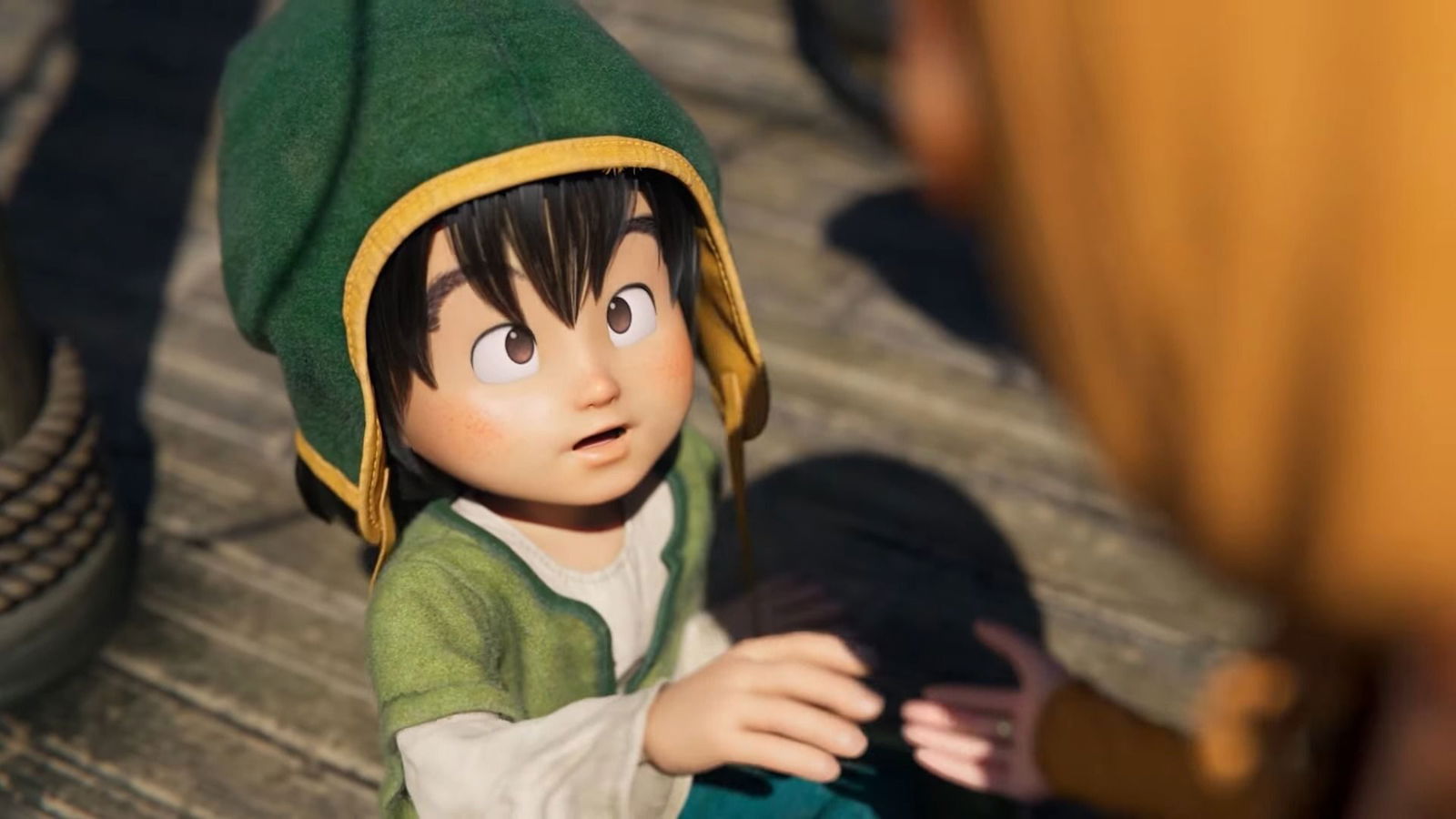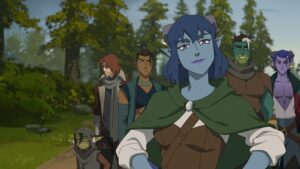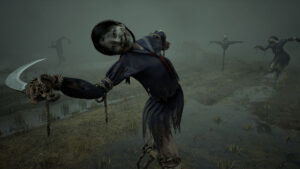Before the release of Dragon Quest VII Reimagined, I sat down with the Lead Producer of Dragon Quest VII Reimagined, Takeshi Ichikawa, to talk about the fresh aesthetic of the 25-year-old adventure and the importance of honouring the legacy of the series.
Before the release of Dragon Quest VII Reimagined, I had the opportunity to sit down with the Lead Producer behind the reimagining, Takeshi Ichikawa, to discuss the franchise’s fresh look and the importance of honouring the series’ legacy. Takeshi Ichikawa is no stranger to the Dragon Quest franchise, having served previously as the Assistant Producer on both Dragon Quest Builders 2 and Dragon Quest XI: Echoes of an Elusive Age before heading the reimagined project for Dragon Quest VII. As Dragon Quest VII Reimagined inches closer to release, Ichikawa spoke with CGMagazine about the deft hands required to deliver a new experience, while remaining faithful to the original release.
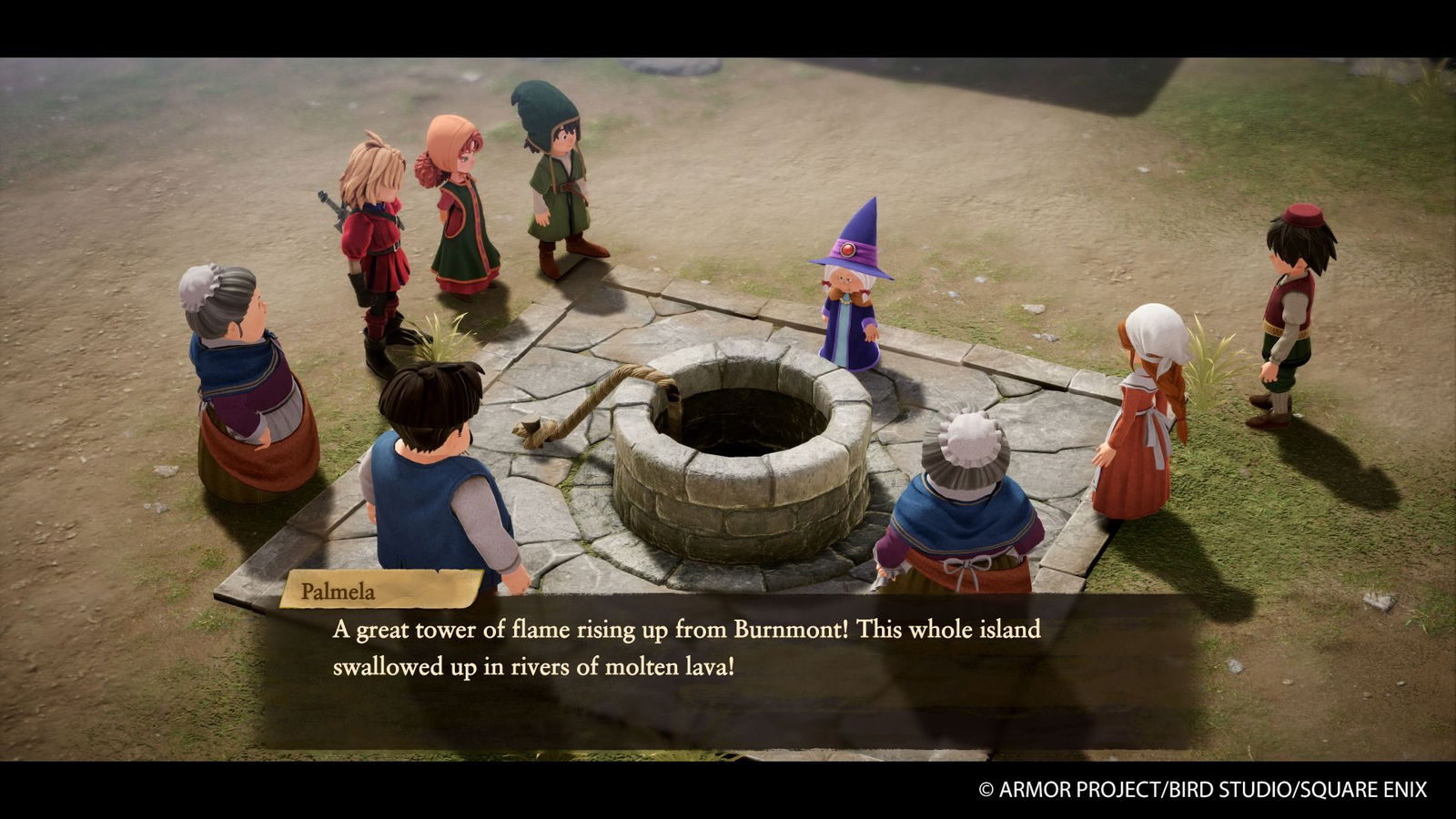
For Dragon Quest VII Reimagined, why did the development team choose the word “Reimagined” over the more common Remaster or Remake?
Takeshi Ichikawa: For this title, we aimed to preserve what made the original Dragon Quest VII so great. Our goal was to figure out how we can remain faithful to the original and keep the elements that made it what it is, but at the same time, retell the story of a 25-year-old game. We wanted to resonate with players all around the world, players who reside in different regions and across generations. The idea was to figure out how we can reach that global audience.
To do that, we felt the goal was to revamp everything so we don’t just ‘recreate the game,’ but make Dragon Quest VII Reimagined from the ground up. Because of that approach, we felt that “Reimagined” was the most appropriate title, as opposed to Remake or Remaster.
Just for clarity, how old are you?
Takeshi Ichikawa: I am 32 years old.
Wow! I’m the same age! Did you play the original Dragon Quest VII? This year marks the 25th Anniversary of Dragon Quest VII. What did you carry from that experience, from playing the original if you did, into what you’ve developed and produced today?
Takeshi Ichikawa: [laughs] I was seven years old back when the original PlayStation One version of Dragon Quest VII was released, and I did play the game when I was seven! But, frankly speaking, I gave up halfway, [laughs] which is a little hard for me to admit.
One of the goals of “Reimagined” is to deliver something for the younger players who, back then, couldn’t finish the game or complete the game, to give them an easier time getting through the story. This is a version of Dragon Quest VII intended for a smoother game experience, so fans who may have given up on the original (like me) get to the finish line this time!
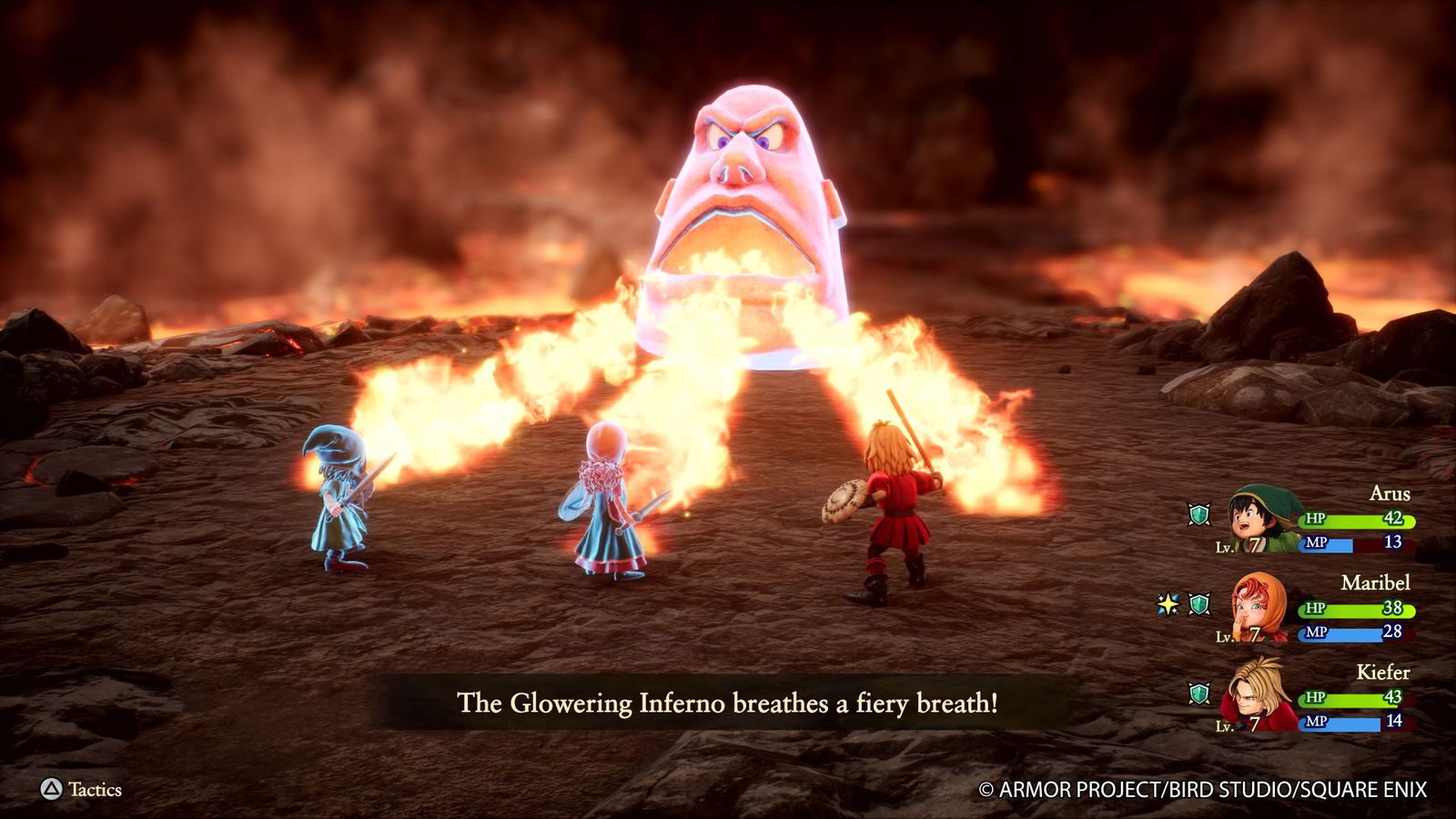
Fans of Dragon Quest VII often struggle with the storyline’s pacing from the midpoint to the ending, and many players stop there. This is where my own first playthrough ended when I was seven years old. Is that what “reimagined” means to you: improving the pacing?
Takeshi Ichikawa: There are three main areas that we really wanted to focus on with Dragon Quest VII Reimagined. Those are: the visuals, the story and of course, the battles.
As far as the story is concerned, as you mentioned, we do hear a lot of comments and feedback from people or players who were concerned about the initial inflated runtime of the game, particularly the scenario. So yes, Reimagining entails adjustments that address those issues.
Takeshi Ichikawa: To be a bit more specific, the way we address these issues is that we really pored over each component of the entire storyline. The original Dragon Quest VII is a collection of vignettes or short stories, and we looked at each and every one of the short stories that were in the game, and we made some adjustments.
In the original game, all stories were critical to complete the game’s story, but now, some of these stories are optional in Reimagined! What we mean by ‘optional’ is that players have the freedom to start these specific story threads at any time in the game. Players actually don’t even need to start or complete some of these threads to advance the storyline. Players can now skip over some of these quests because they’re now optional. But in addition to that, we also identified some stories that have little or no direct impact on the overarching main plot of Dragon Quest VII Reimagined, and for some of those side stories, we decided to take them out.
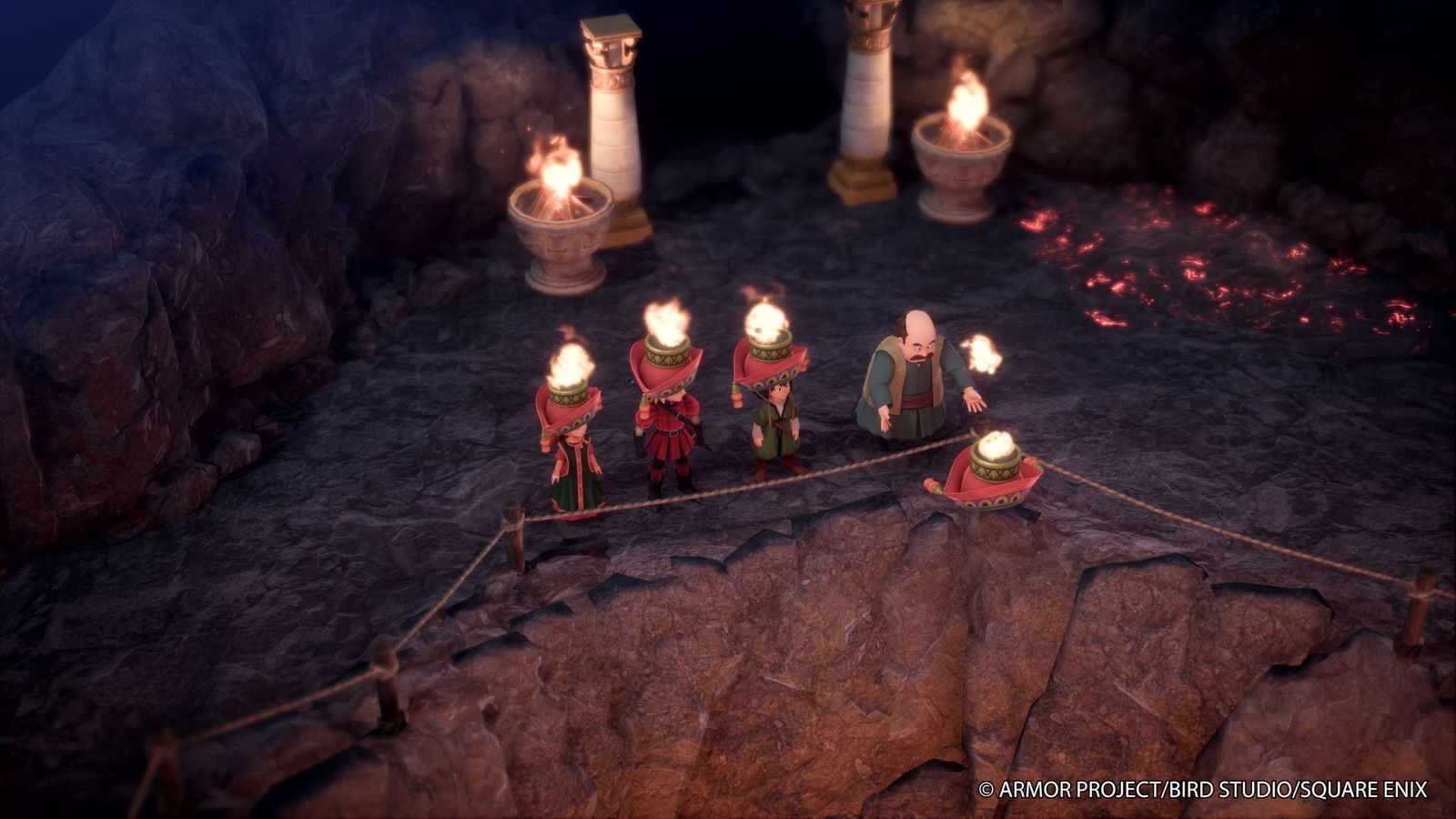
Takeshi Ichikawa: With that said, these adjustments of specific storylines are not the only changes in the Reimagined version; we’re also introducing completely new storylines that explore character relationships, and they give a more in-depth look at how characters interact with one another. Reimagined features completely new storylines and dialogues to flesh out the adventure even further. For players who have previously experienced Dragon Quest VII, the reimagined version will provide a fresh and new story experience.
As fans, we are looking at three Dragon Quest remasters in one year, and now we have Reimagined. Why did the team behind Reimagined, after the success and distinct look of the Pixel Remasters, decide to set aside that visual style and introduce lifelike dolls to reimagine the game? Why did your team choose to overhaul the Dragon Quest VII aesthetic when the Pixel Remasters were already successful?
Takeshi Ichikawa: One common thread between all the Dragon Quest mainline titles is that the character designs are solely done by Akira Toriyama. So in the very early stages of development, we looked over the original character illustrations provided by Akira Toriyama, way back in the seven-year-old [laughs] days. We identified two unique traits that weren’t shared with other mainline installments of the Dragon Quest series, and these are the fact that the characters are drawn shorter in Dragon Quest VII, and they have very adorable visual design elements.
We wanted to really tap into those elements, so we started exploring a lot of different visual options that really leverage those exaggerated elements. In the ‘ideation phase,’ we started exploring a bunch of different visual styles. That process involved doing research of various other visual media, like films, TV shows, video games and all that. We saw that there were quite a few works of art that utilized the doll visuals, an aesthetic similar to what we ended up doing with Dragon Quest VII Reimagined.
We found out these works were quite well regarded around the world. So that was kind of the first steps of us gravitating towards this handcrafted style. As a result of research, we did feel that this specific handcrafted style that we came up with was the best way to leverage the strengths of these charming character designs.

How does it feel to carry the 25-year legacy of such a storied franchise entry crafted by the legendary Akira Toriyama, and does Japan really have a day off of work for each Dragon Quest release?
Takeshi Ichikawa: So first off, I’m going to answer the more serious question [laughs]. Like you mentioned, Dragon Quest VII carries 25 years’ worth of legacy, but it’s when you look at the facts, the data, it also happens to be the best-selling title ever for the PS1 platform! This means there’s just an incredible number of people who hold it really close to their hearts. It’s such a beloved title. Working on the Reimagined version also means that there is a responsibility to ensure that I’m creating something that satisfies the players who played the original.
We, as developers, had to make sure that these returning fans are satisfied, that they’re happy with the Reimagined version. But at the same time, we also must make sure that this is also going to be an enjoyable experience for newcomers to the series as well. Having to find that balance and fulfill that responsibility is a lot. But, it’s also a great honour.
Takeshi Ichikawa: [laughs] To answer your second question, the answer is unknown!
As a gaming producer, what does Dragon Quest mean to you now, and what did it mean to you before embarking on the Dragon Quest VII Reimagined development journey?
Takeshi Ichikawa: In my opinion, the biggest strength or the biggest charm of the Dragon Quest series is its narrative. It’s an epic saga. It’s about this huge, vast world and larger-than-life adventure of heroes! But also, when you look at it piece by piece, when you look at the dialogues and characters, there’s a lot of humour and a human element involved too.
Even though it’s an epic adventure in a fantasy world, opposing elements allow the adventure to feel more relevant to players like an inside joke. I think the story providing an experience for players like that is an incredible feat that not a lot of other franchises can accomplish.
Regarding the whole series, it does feel like you can leave Dragon Quest VII, walk across the street and enter Dragon Quest VIII, and it feels like the same game off the bat. That’s just the charm of the entire franchise. Are there any rules that you have to follow when developing a Dragon Quest title, or are they more like loose guidelines?
Takeshi Ichikawa: I speak with Yuji Horii-san a lot [the creator of the Dragon Quest series], and his sentiment is that he actually doesn’t have a strict guideline on what we can or can’t include in the games.
But, if I were to say one thing that we must include, or reflect in the Dragon Quest series, is that the protagonists of each title need to be avatars of the players. Essentially, you ARE the protagonist by extension. So that’s one common thread all Dragon Quest games pull.
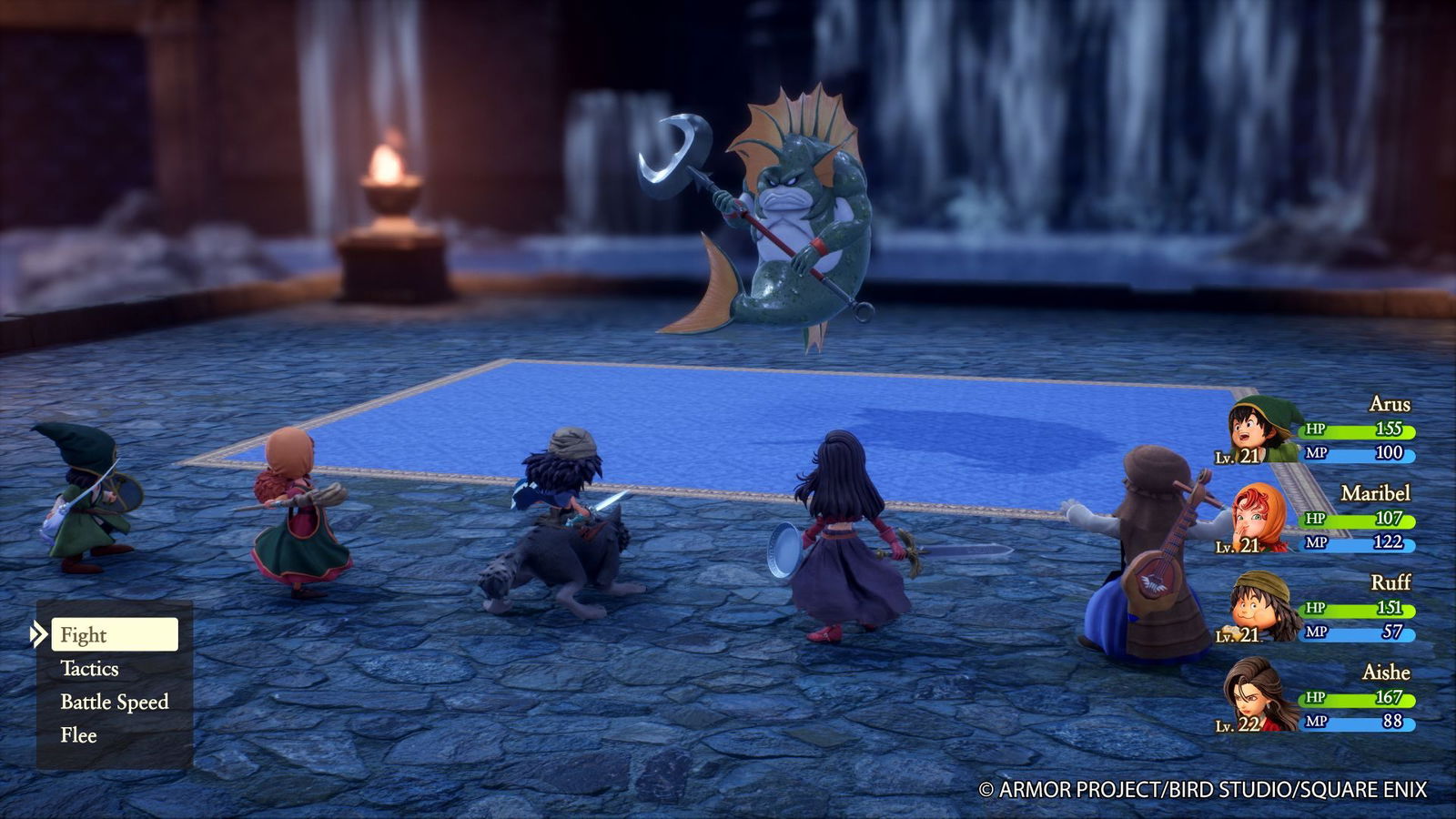
Even though Dragon Quest VII Reimagined’s cast is voice-acted, this adds to that emotional weight. For a DQ protagonist, although there is some voice work, dialogue and lines, that amount is substantially less compared to the other characters because we want the player to project the protagonist as themselves.
For me personally, what I feel all DQ titles should have is elements in the story where the story being told is the story of the protagonist, in extension, the story of the player. It has to be a tale that the player themselves are living through. That is something that should be reflected in all Dragon Quest titles.
Did you guys think of putting a new party member in the game? Like the 3DS version did with Aishe?
Takeshi Ichikawa: We did consider it, but since this title Dragon Quest VII Reimagined, also serves as a remake of the original, one of our many goals and visions were to retain and preserve the uniqueness and the aesthetics of the original as much as possible. We ultimately felt that it was the best option not to move forward with that approach.
Thank you so much for your time, and I can’t wait for Dragon Quest VII Reimagined to land on consoles next year!
Dragon Quest VII Reimagined lands on console on February 5, 2026.
